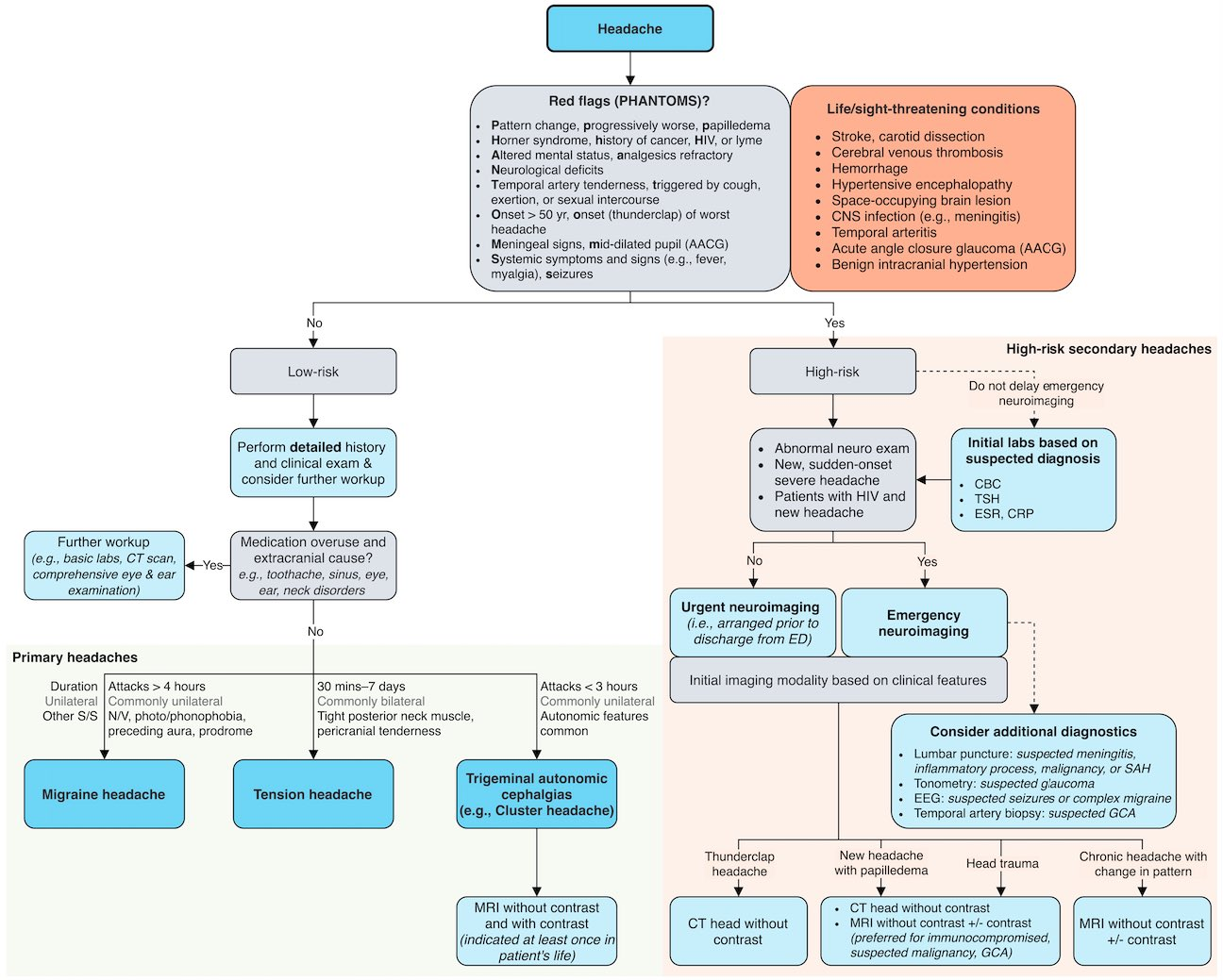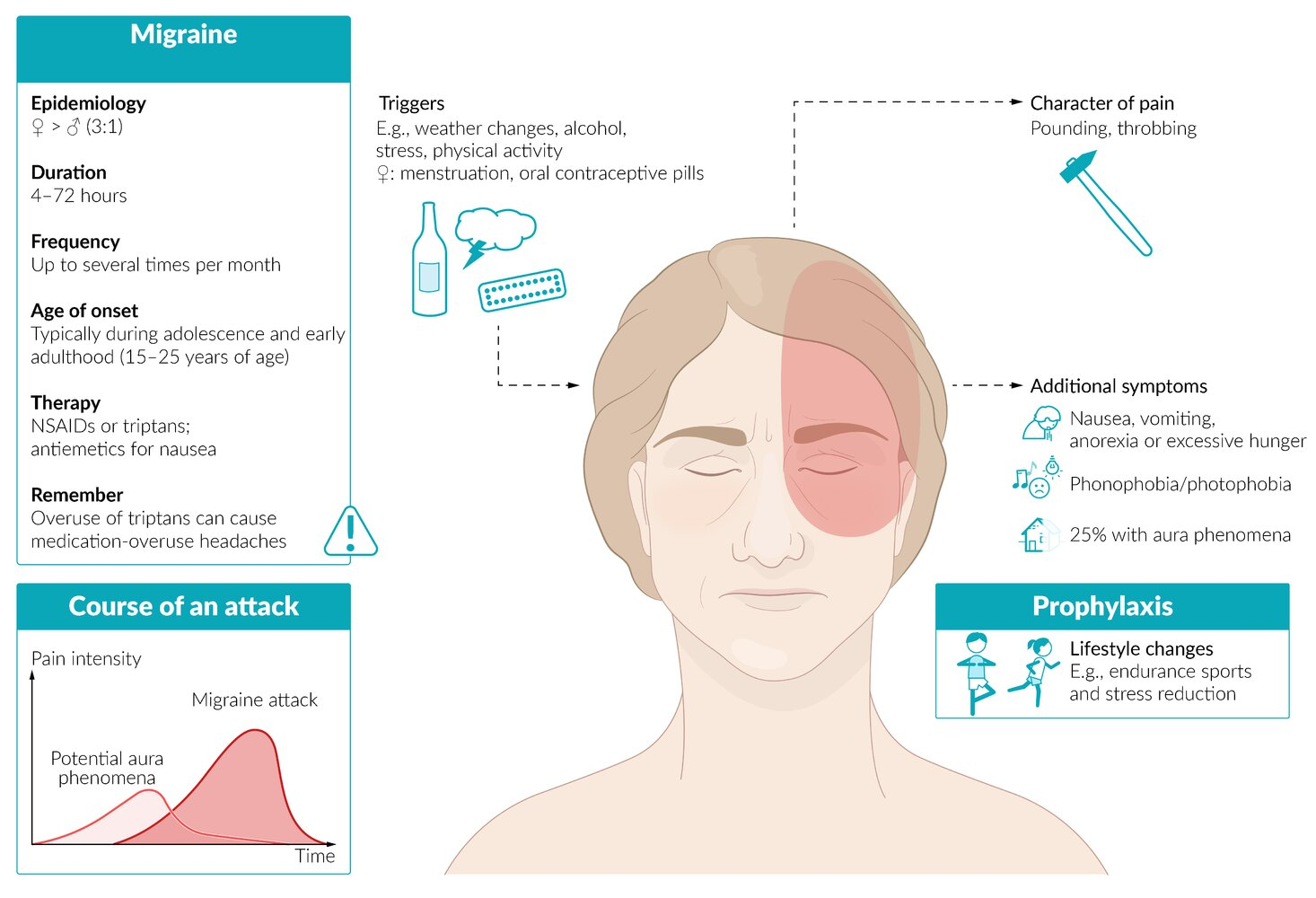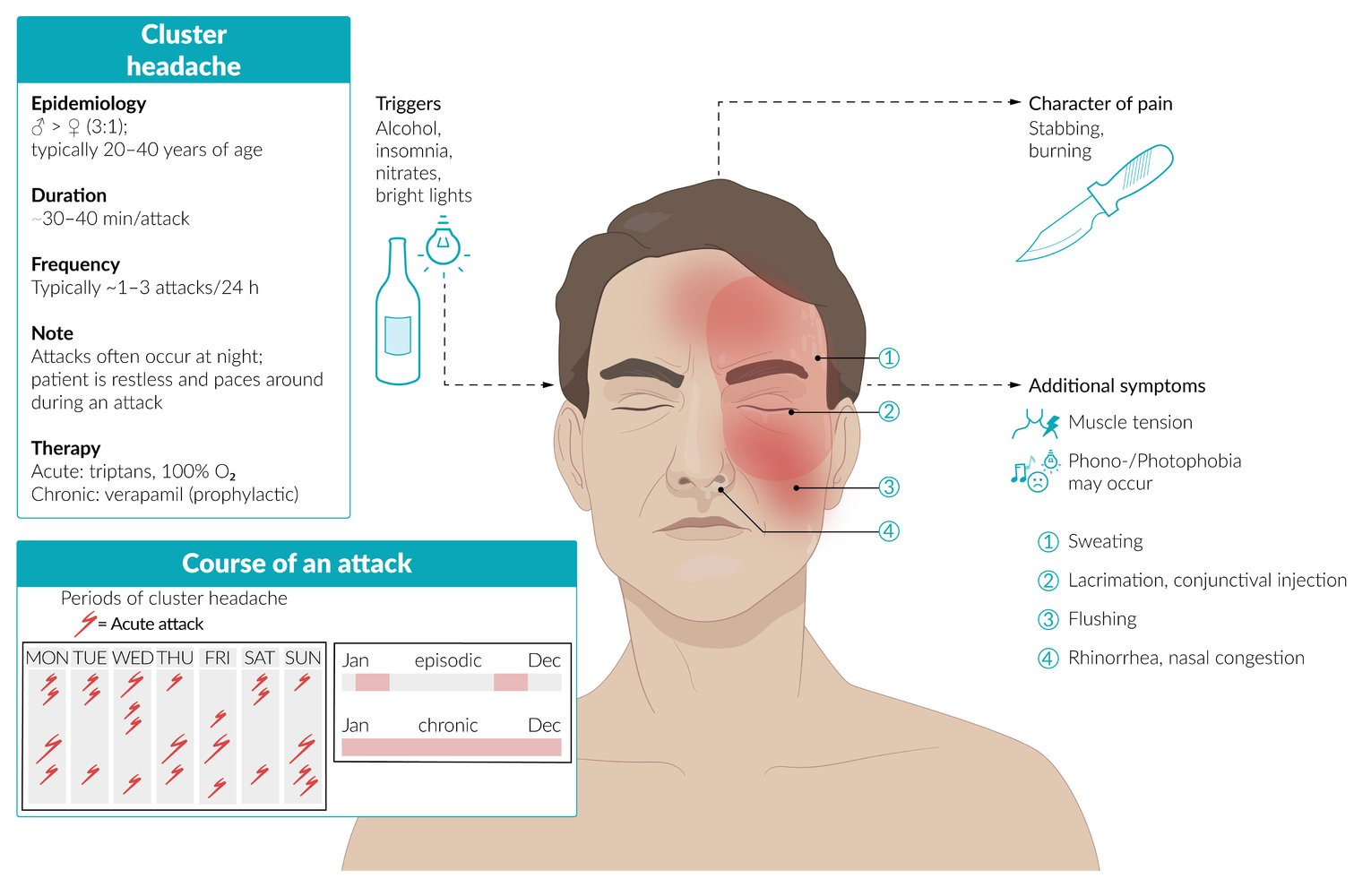Approach to headaches
| Migraine | Cluster | Tension |
|---|
| Sex predilection | Female > male | Male > female | Female > male |
| Family history | Often present | ± | None |
| Onset | Variable | During sleep or similar timing daily | Under stress |
| Location | Often unilateral | Behind one eye | Band-like pattern around the head (bilateral) |
| Character | Pulsatile & throbbing | Excruciating, sharp & steady | Dull, tight & persistent |
| Duration | 4-72 hr | 15-180 min | 30 min to months/years |
| Associated symptoms | Photophobia, phonophobia & nausea, ± aura | Ipsilateral autonomic symptoms: Ipsilateral sweating, facial flushing, nasal congestion, pupillary changes & lacrimation | Muscle tenderness in the head, neck, or shoulders |

Migraine

Cluster headache

- Quickly developing (within minutes), short, recurring attacks that usually occur in a cyclical pattern (“cluster periods”)
- Circadian Rhythm: Attacks often occur at the same time each day, frequently awakening the patient from sleep (especially 1-2 AM).
- Circannual Rhythm: Headaches occur in “clusters” or series lasting weeks to months, followed by remission periods that can last for months or years.
- Attacks are brief (15-180 minutes) but occur frequently during a cluster period (from once every other day to 8 times a day).
- Alcohol is a potent trigger during a cluster period but not during remission.


